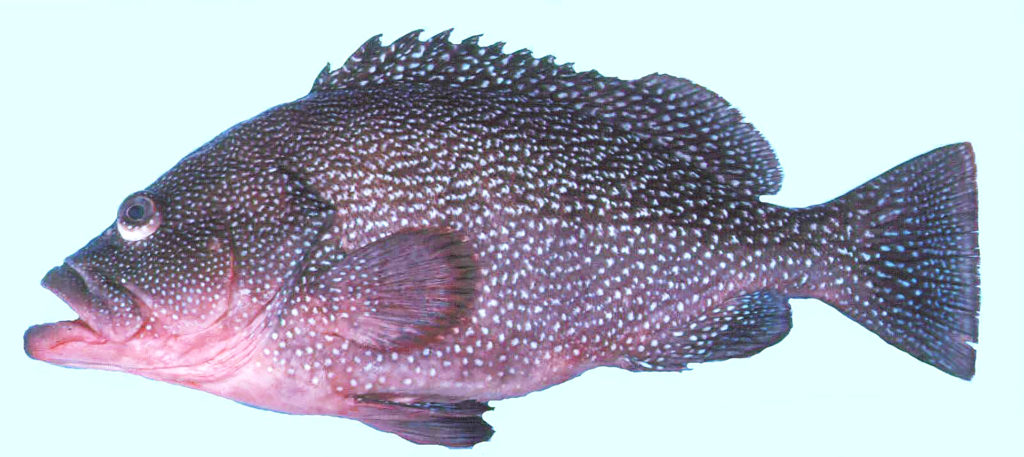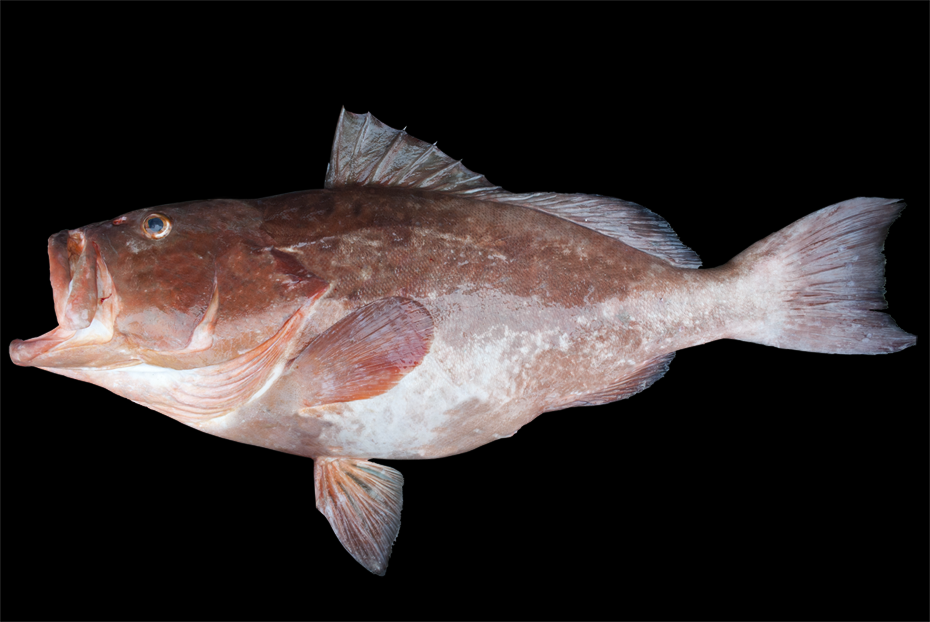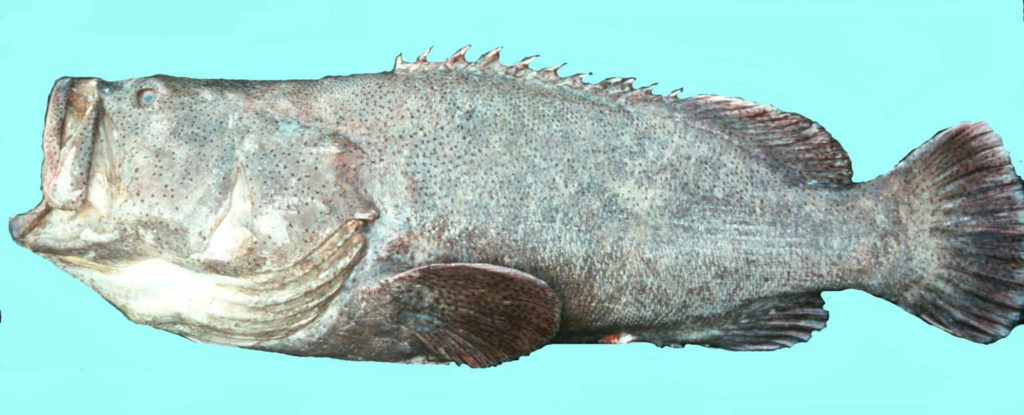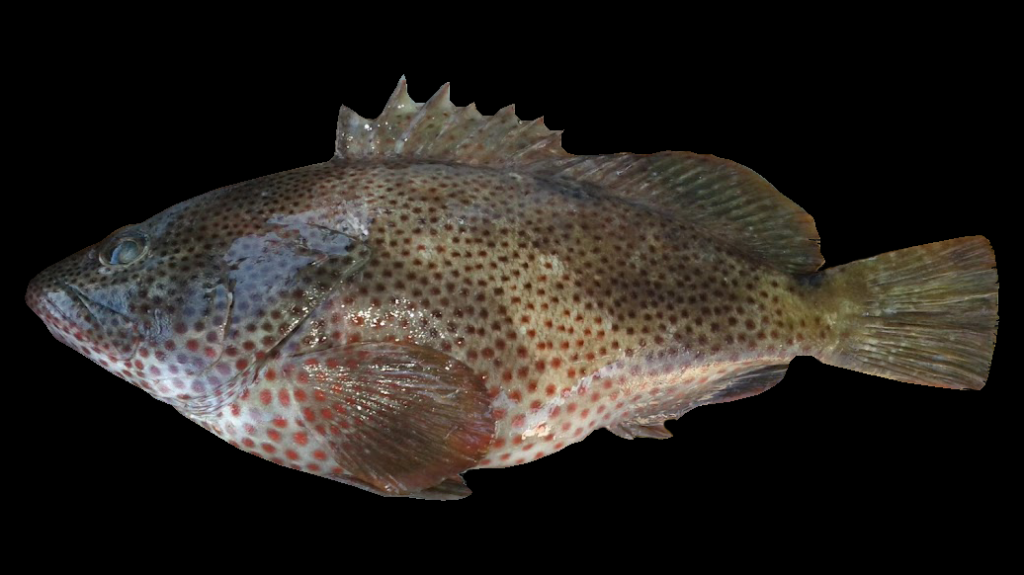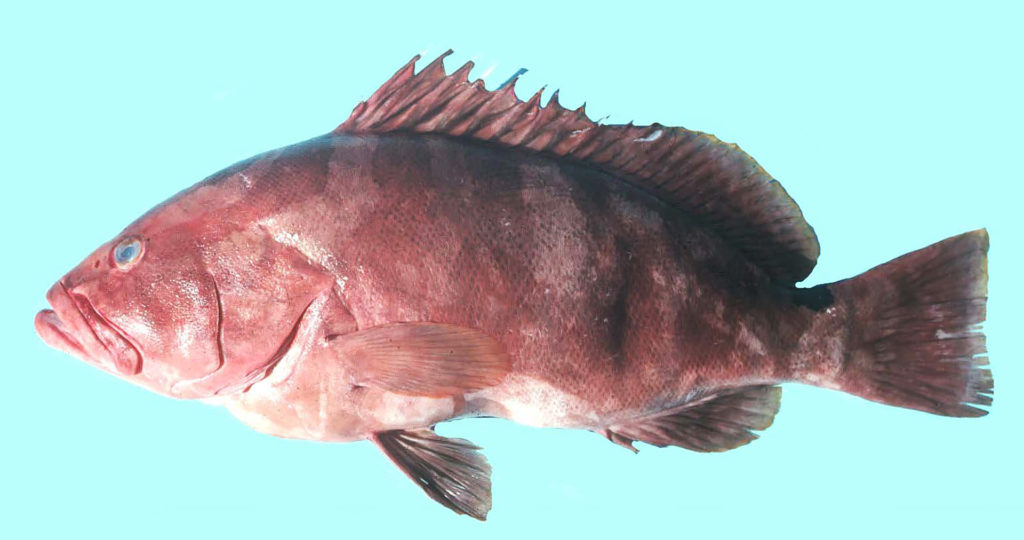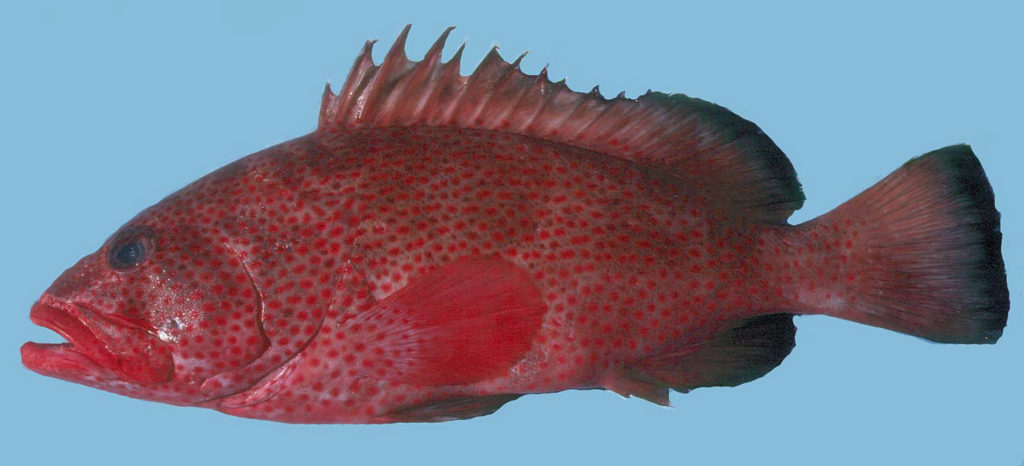
| Family | Scientific Name | Author | Year | Common Name |
| Serranidae | Epinephelus guttatus | (Linnaeus) | 1758 | Red Hind |
All Epinephelus — Dorsal fin with 10 or 11 spines and 13-19 rays. Anal fin with 3 spines and 8 or 9 rays (rarely 10). Most of upper edge of operculum free, not connected by skin to body. Caudal fin rounded, truncate, or emarginate. Head larger, its length contained 2.3-3.3 times in standard length. Middle opercle spine not reaching edge of operculum. Front nostrils variously shaped, but always closer to rear nostrils than to upper lip. A thin, moveable supramaxilla bone along upper, rear edge of maxilla (supramaxilla is covered by skin and not obvious, but it can be discerned by pushing the upper edge of the maxilla with a fingernail or dissecting needle; the supramaxilla is more apparent if the skin is cut and peeled off the free, rear part of the maxilla). Most teeth depressible (hinged). Scaly flap of skin joining upper part of inner (posterior) side of pectoral-fin base to body. Soft dorsal and anal fins mostly covered with thick skin and scales. Scales on body small, lateral scale series (69-146) more numerous than lateral-line scales. No large antrorse spine on corner of preopercle (but there may a few enlarged, ventrally-directed serrae there). Snout longer than eye diameter. Body depth usually not greater than head length, 2.5-3.6 times in standard length. Midlateral body scales rough.
Epinephelus guttatus
Unique Characters: Dorsal-fin rays 15 or 16; anal-fin rays 8. Pelvic-fin origin below or behind lower end of pectoral-fin base; pelvic fins not longer than pectoral fins (usually less than 90% pectoral-fin length). Caudal fin convex or rounded. Second, third, or fourth dorsal-fin spines longest, longer than anterior dorsal rays. Body width usually less than half of body depth. Head and body covered with dark orange-brown or dark red spots No black saddle on peduncle; no dark blotches at base of dorsal fin; soft-rayed part of dorsal fin with blackish margin. Pectoral-fin rays 16-18.
Similar Species:
Speckled Hind
Epinephelus drummondhayi
Red Grouper
Epinephelus mario
Speckled Hind Epinephelus drummondhayi. Dorsal-fin rays 15 or 16; anal-fin rays 9. Pelvic-fin origin below or behind lower end of pectoral-fin base; pelvic fins not longer than pectoral fins (usually less than 90% pectoral-fin length). Rear margin of caudal fin truncate or concave. Dorsal-fin membranes distinctly incised between the spines, the third or fourth spine longest. Adults dark reddish brown, the head, body and median fins covered with small white spots (most spots smaller than pupil). Juveniles bright yellow, covered with small bluishwhite spots.
Red Grouper Epinephelus morio. Dorsal-fin rays 16 or 17; anal-fin rays 8-10. Pelvic-fin origin below or behind lower end of pectoral-fin base; pelvic fins not longer than pectoral fins (usually less than 90% pectoral-fin length). Rear margin of caudal fin truncate or concave. Interspinous dorsal-fin membranes not incised; second or third dorsal-fin spine longest. Head and body dark reddish brown, usually with irregular pale spots and blotches, and black dots on snout and cheek; median fins dark distally, with a narrow white edge; inside of mouth red to orange.
Atlantic Goliath Grouper
Epinephelus itajara
Rock Hind
Epinephelus adscensionis
Atlantic Goliath Grouper Epinephelus itajara. Dorsal-fin rays 15 or 16; anal-fin rays 8. Pelvic-fin origin below or behind lower end of pectoral-fin base; pelvic fins not longer than pectoral fins (usually less than 90% pectoral-fin length). Caudal fin convex or rounded. Third to eleventh dorsal-fin spines about equal and distinctly shorter than anterior dorsal-fin rays. Head and body very broad, the greatest body width equals half or more of body depth.
Rock Hind Epinephelus adscensionis. Dorsal-fin rays 16-18; anal-fin rays 8. Pelvic-fin origin below or behind lower end of pectoral-fin base; pelvic fins not longer than pectoral fins (usually less than 90% pectoral-fin length). Caudal fin convex or rounded. Second, third, or fourth dorsal-fin spines longest, longer than anterior dorsal rays. Body width usually less than half of body depth. Head and body covered with dark orange-brown or dark red spots Black saddle blotch on caudal peduncle and 3-5 dark blotches at base of dorsal fin. No blackish margin on soft-rayed part of dorsal fin. Pectoral-fin rays 18-20.
Nassau Grouper
Epinephelus striatus
Nassau Grouper Epinephelus striatus. Dorsal-fin rays 16-18; anal-fin rays 8. Pelvic-fin origin below or behind lower end of pectoral-fin base; pelvic fins not longer than pectoral fins (usually less than 90% pectoral-fin length). Caudal fin convex or rounded. Second, third, or fourth dorsal-fin spines longest, longer than anterior dorsal rays. Body width usually less than half of body depth. No dark orange-brown or dark red spots.
Gallery
